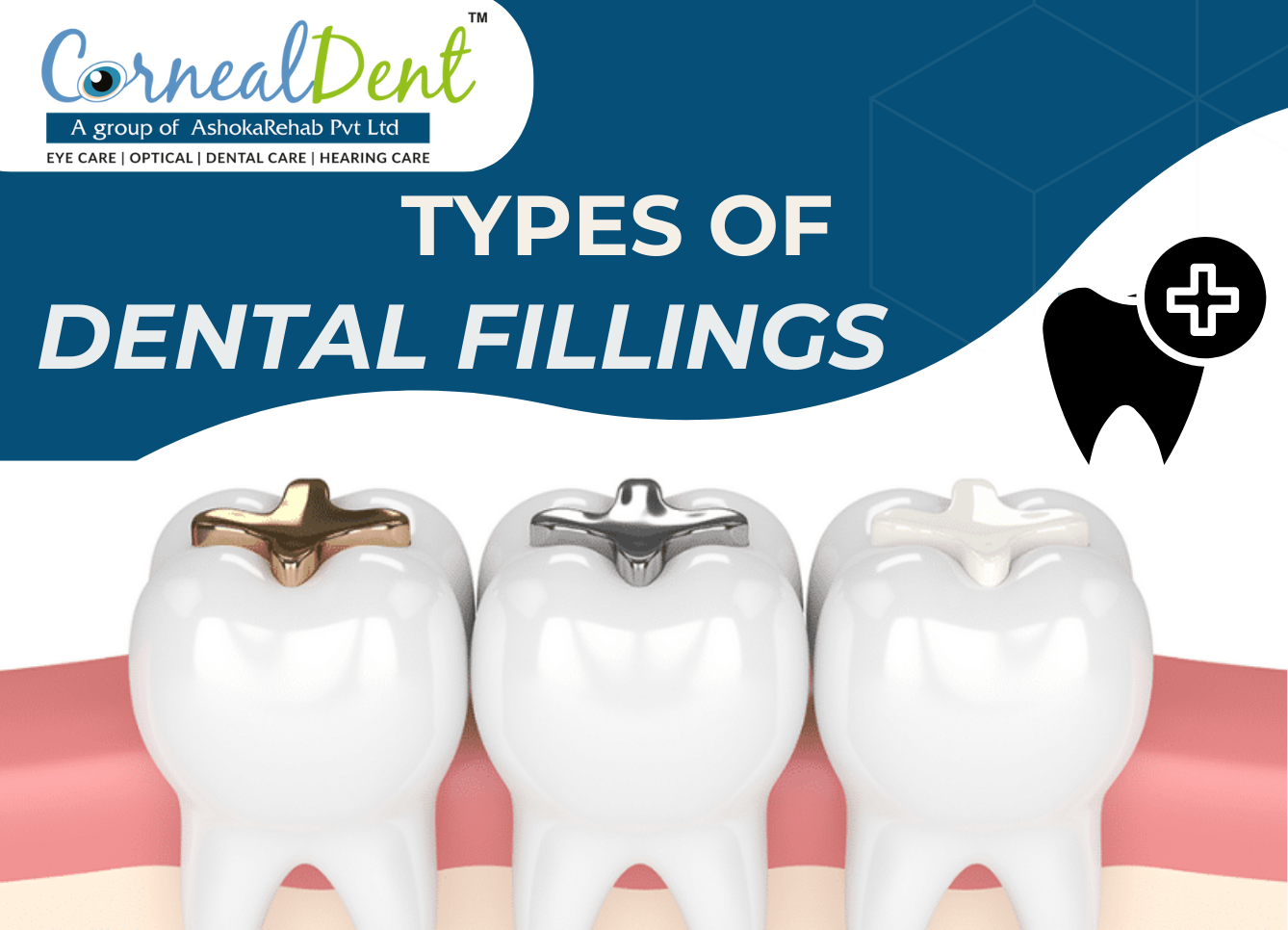
Dental fillings are one of the most common procedures in dental care, playing a crucial role in restoring the function, integrity, and morphology of missing tooth structure resulting from cavities or external trauma. With advancements in dental technology, there are now various types of fillings available, each with its own set of advantages and disadvantages. This guide will delve into the different types of dental fillings, the procedures involved, post-filling care, and how Corneal Dent can assist you with your dental filling needs.
What is a Dental Filling?
A dental filling is a treatment modality used to restore the function and appearance of a tooth that has been damaged by decay, wear, or minor fractures. The process involves removing the decayed portion of the tooth and filling it with a material that can restore its original shape and function. This not only helps to prevent further decay but also restores the tooth’s structural integrity.
Types of Dental Fillings
Amalgam Fillings
Amalgam fillings, also known as silver fillings, have been used for over a century. They are composed of a mixture of metals including silver, mercury, copper, and tin. Despite the controversy over the mercury content, amalgam fillings are durable, cost-effective, and can withstand significant chewing forces.
Advantages:
- Durability and strength
- Cost-effective
- Less sensitivity to moisture during placement
Disadvantages:
- Aesthetic concerns due to their metallic color
- Possible sensitivity to metals
- Requires removal of some healthy tooth structure for placement
Composite Fillings
Composite fillings are made of a resin-based material that is designed to match the color of your teeth, providing a more natural appearance. They are suitable for both front and back teeth and are bonded directly to the tooth structure, which helps to support the remaining tooth.
Advantages:
- Aesthetic appeal due to color matching
- Bonding to the tooth can provide additional support
- Minimal removal of healthy tooth structure
Disadvantages:
- Less durable compared to amalgam
- Can be more expensive
- Susceptible to staining over time
Ceramic Fillings
Ceramic fillings, often made from porcelain, are another tooth-colored option that offers a natural appearance. They are more resistant to staining compared to composite fillings and can be used for both aesthetic and functional purposes.
Advantages:
- Excellent aesthetic match to natural teeth
- High resistance to staining
- Long-lasting with proper care
Disadvantages:
- More expensive than composite and amalgam fillings
- Requires more than one dental visit if the filling is fabricated in a lab
- Brittle compared to metal fillings
Gold Fillings
Gold fillings, also known as gold inlays or onlays, are custom-made in a dental laboratory and then cemented into place. Gold fillings are highly durable and can last for many years if properly maintained.
Advantages:
- Exceptional durability and longevity
- Biocompatible with gum tissues
- Less wear to the opposing teeth compared to amalgam
Disadvantages:
- High cost due to the material and fabrication process
- Requires multiple dental visits
- Noticeable color, which might be a concern for some patients
Glass Ionomer Fillings
Glass ionomer fillings are made from a combination of acrylic and a specific type of glass that releases fluoride, which can help protect the tooth from further decay. These fillings are often used in areas not subject to heavy chewing pressure, such as around the gum line or in primary teeth.
Advantages:
- Fluoride release helps prevent further decay
- Good for patients with high caries risk
- Tooth-colored, though less aesthetic than composite
Disadvantages:
- Less durable and more prone to wear and fracture
- Limited use in areas subject to heavy chewing forces
Dental Filling Procedure
The dental filling procedure typically involves the following steps:
Examination and Diagnosis: The dentist will examine your teeth and may take X-rays to determine the extent of the decay or damage.
Anesthesia: A local anesthetic is administered to numb the area around the affected tooth to ensure a pain-free procedure.
Removing the Decay: The decayed portion of the tooth is removed using a dental drill, laser, or air abrasion tool. The area is then cleaned to remove bacteria and debris.
Filling Placement:
- For Amalgam Fillings: The amalgam is mixed and packed into the cavity. It hardens quickly and can be polished to a smooth finish.
- For Composite Fillings: The composite resin is applied in layers. Each layer is hardened using a special light. Once all layers are in place, the filling is shaped and polished.
- For Ceramic and Gold Fillings: An impression of the tooth is taken and sent to a lab. A temporary filling may be placed while the permanent filling is fabricated. On the next visit, the permanent filling is cemented in place.
- For Glass Ionomer Fillings: The material is mixed and applied to the cavity. It hardens quickly and may require minimal polishing.
Finishing Touches: Once the filling is in place, the dentist will check your bite to ensure proper alignment. Any necessary adjustments are made, and the filling is polished to a smooth finish.
Can We Eat After a Dental Filling?
One of the most common questions patients have after getting a dental filling is when they can resume eating. The answer depends on the type of filling used:
Amalgam Fillings: It’s advisable to wait at least 24 hours before eating hard or sticky foods. This allows the filling to fully set and harden.
Composite Fillings: These fillings set almost immediately with the use of a curing light, so you can eat as soon as the numbness from the anesthesia wears off. However, it’s best to avoid very hard or sticky foods for a few hours.
Ceramic and Gold Fillings: Similar to composite fillings, you can usually eat once the numbness subsides. Avoid chewing on the side with the filling for at least 24 hours if a temporary filling was placed.
Glass Ionomer Fillings: Wait until the numbness wears off to eat. It’s best to avoid very hard or sticky foods for a few hours to allow the material to set properly.
In all cases, it’s crucial to follow your dentist’s specific instructions regarding eating and aftercare to ensure the longevity and success of your dental filling.
How Corneal Dent Can Help You with Dental Fillings?
At Corneal Dent, we are committed to providing our patients with the highest standard of dental care. Our team of experienced dentists and dental hygienists utilize the latest techniques and materials to ensure your dental fillings are durable, functional, and aesthetically pleasing.
Book An Appointment
Don’t let tooth decay compromise your oral health. Whether you need a routine check-up or a dental filling, Corneal Dent is here to help. Contact us today to schedule an appointment and take the first step towards a healthier, brighter smile.
Why?
Choosing Us for Dental Care
A Decision You Can Trust

highly Experienced dentists
You will find the best dentists in Secunderabad

Comprehensive dental services
High quality dental care services are offered in our clinic

Comfortable and relaxing environment
You will feel relaxed and comfortable during the treatment

Convenient location and hours
Book an appointment now and get back your confident smile
